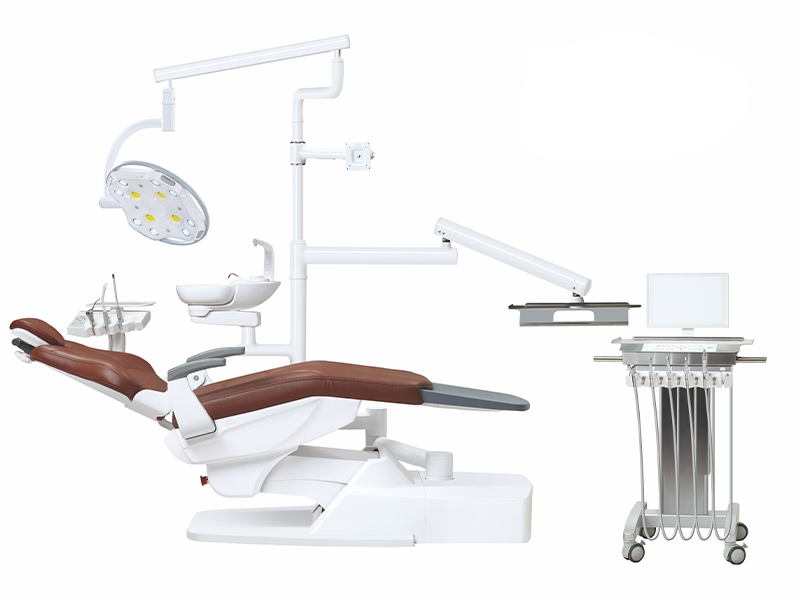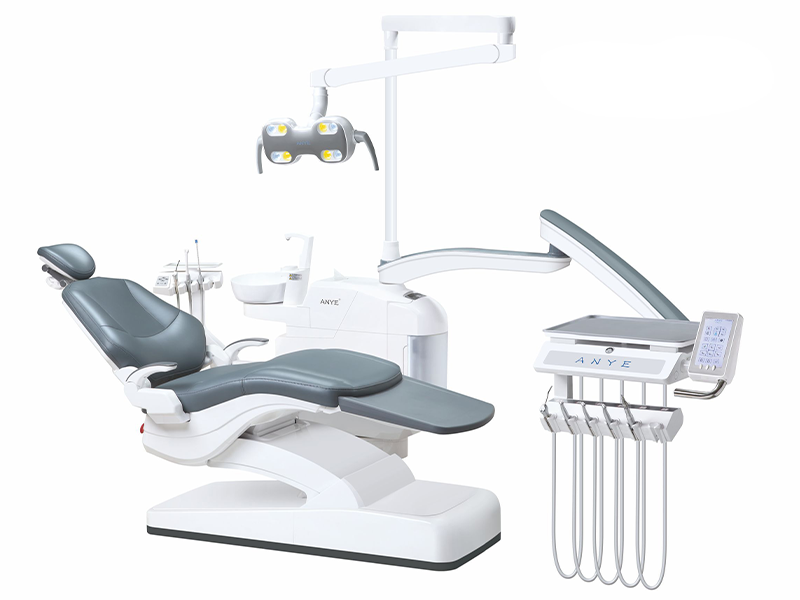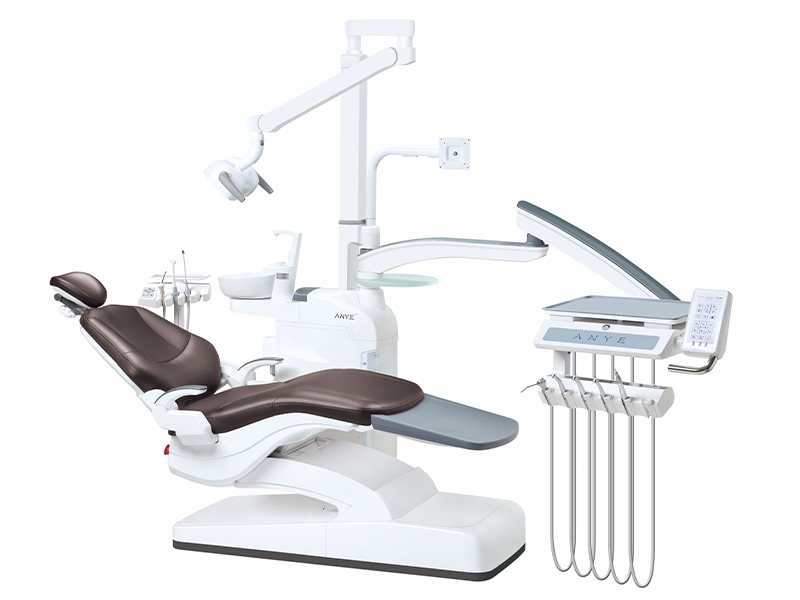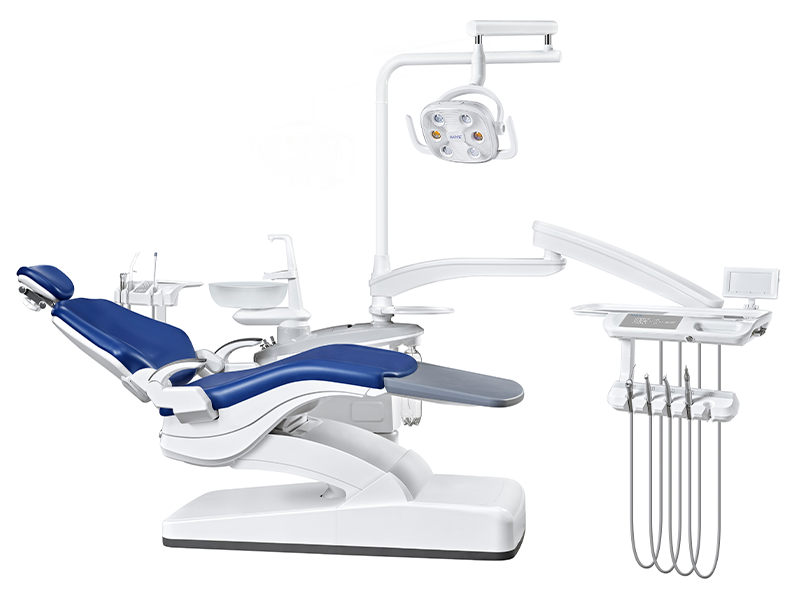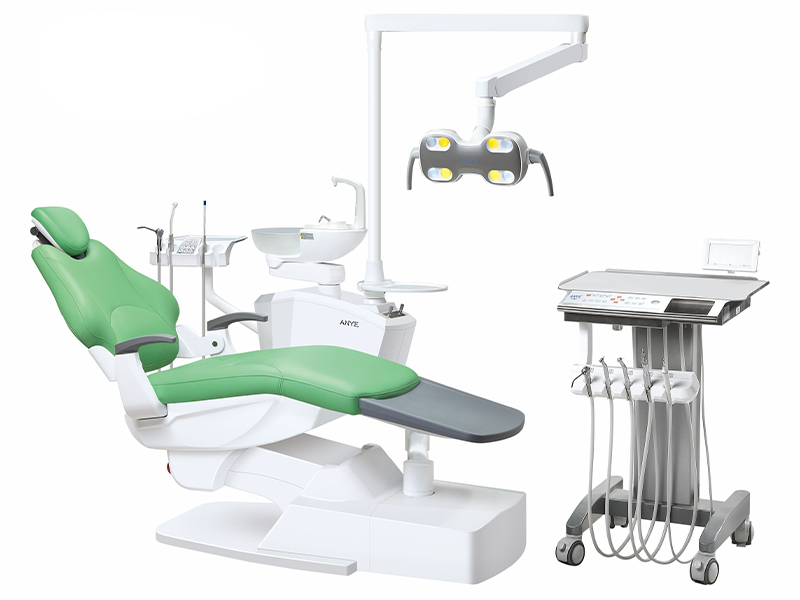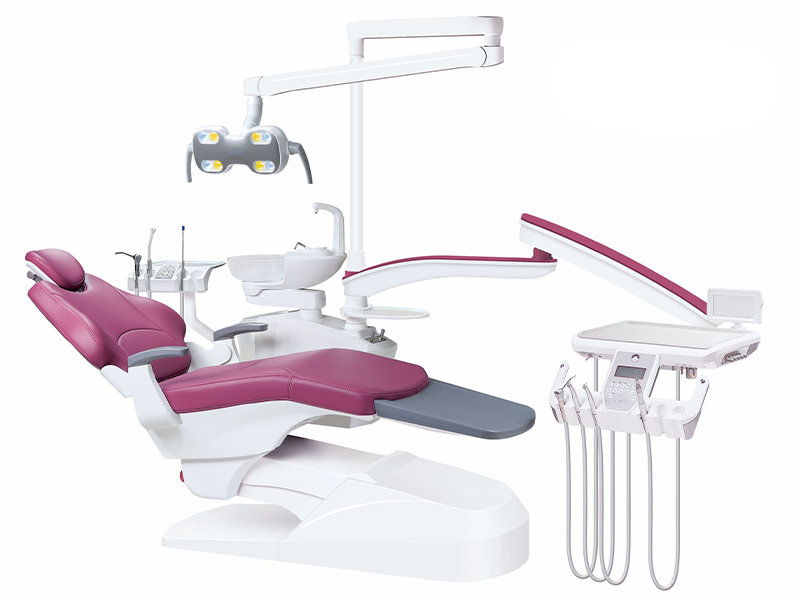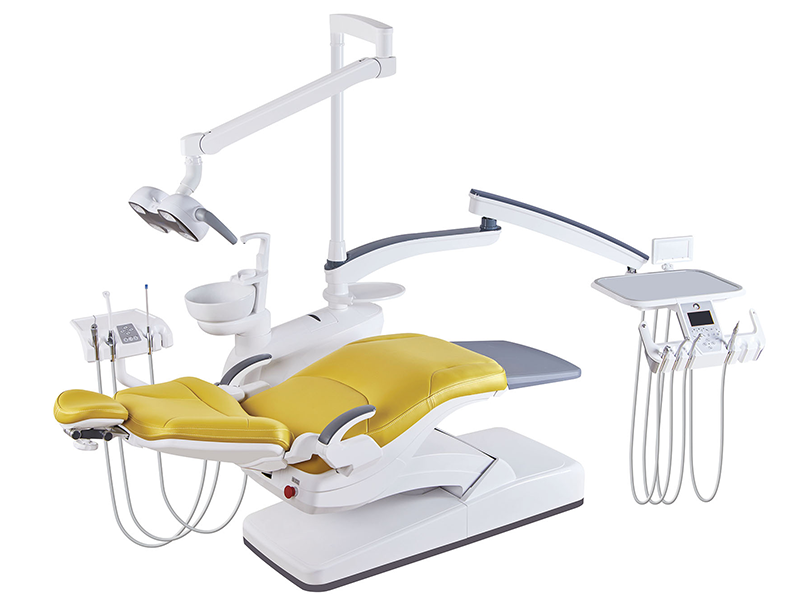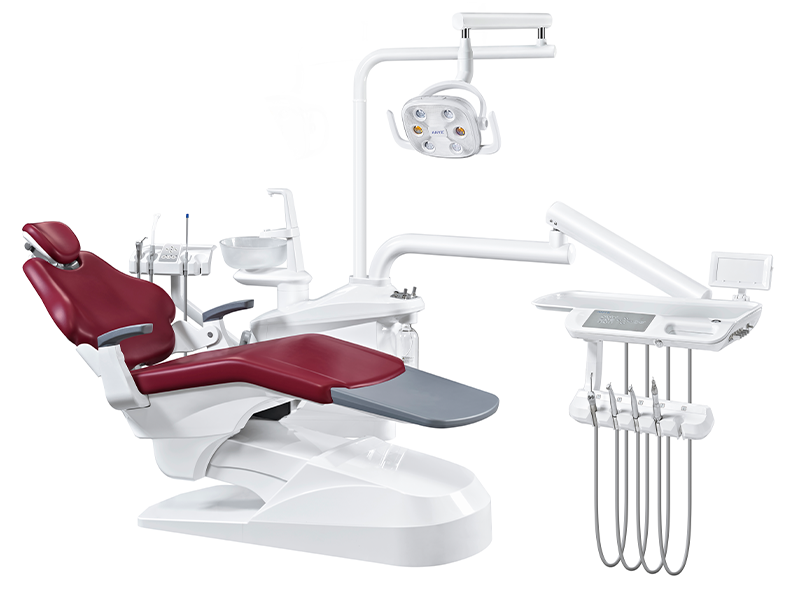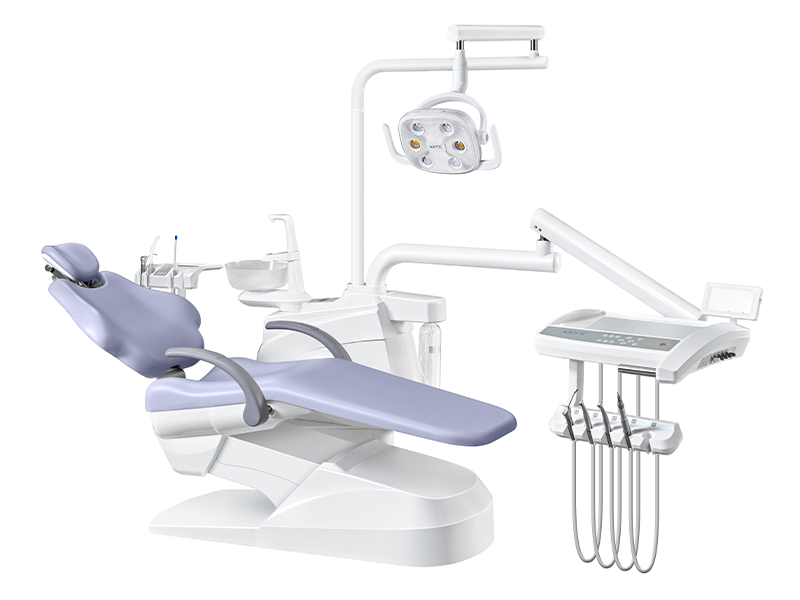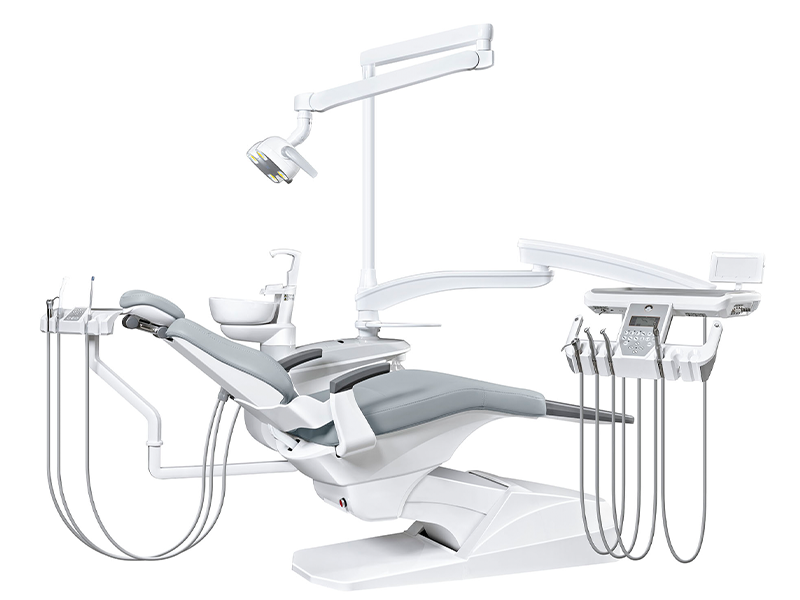As you settle into the dental chair for your next appointment, you might notice something different. The cold, clinical feel of traditional dental offices is rapidly becoming a relic of the past. Today's dental chairs are at the forefront of a technological revolution, transforming not just the patient experience but the entire landscape of dental care. In 2024, the global dental chair market is poised for unprecedented growth and innovation, offering exciting possibilities for both patients and providers.
The Evolution of Comfort: Ergonomics Meets Technology
Dental chairs have significantly transformed from basic functional equipment into sophisticated, ergonomic designs that prioritize both patient comfort and practitioner efficiency. This evolution reflects advancements in technology and a deeper understanding of ergonomics, resulting in a more positive experience for both patients and dental professionals.
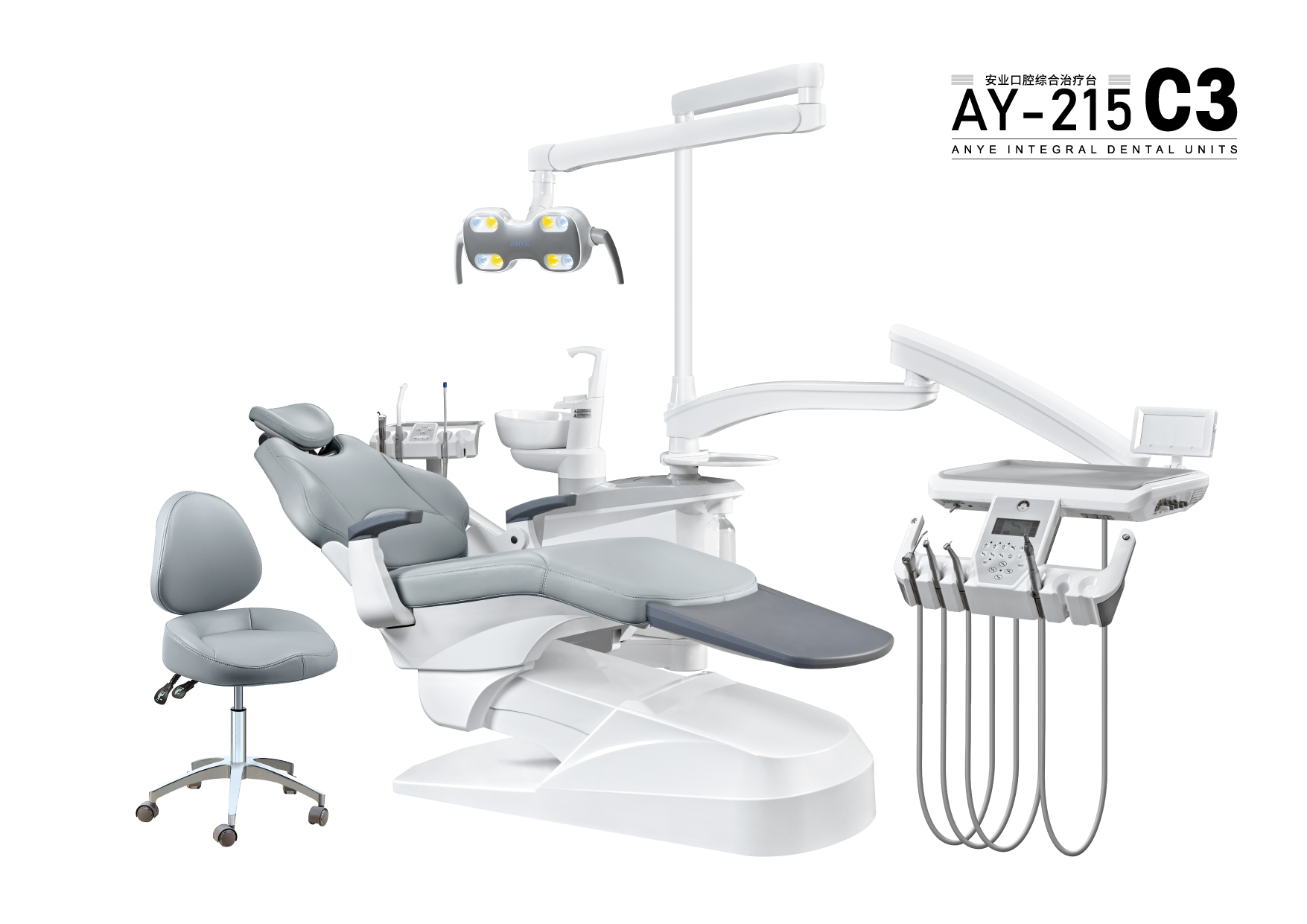
Patient-Centric Design: More Than Just a Seat
Modern dental chairs are engineered with a strong focus on patient comfort. Key features include:
-
Advanced Materials: The incorporation of memory foam and pressure-relieving technology allows these chairs to adapt to the patient's body, distributing weight evenly and minimizing discomfort during lengthy procedures.
-
Adjustability: Features such as adjustable headrests and lumbar support ensure proper spinal alignment, reducing the risk of neck and back strain.
-
Relaxation Features: Many chairs now include heating and massage functions, which not only enhance comfort but also help alleviate anxiety, creating a more relaxing environment for patients.
These innovations contribute to improved patient satisfaction and compliance, making dental visits less daunting. According to a study by the American Dental Association, patient comfort directly correlates with treatment adherence, highlighting the importance of ergonomic design in modern dentistry.
Practitioner Efficiency: Ergonomics for the Dental Team
While patient comfort is crucial, the ergonomic benefits for dental practitioners are equally important. Modern dental chairs address the physical demands placed on dental professionals through:
-
Enhanced Positioning: Chairs now offer a wider range of motion and programmable settings that allow quick transitions between positions, helping practitioners maintain optimal posture throughout procedures.
-
Integrated Delivery Systems: By placing instruments within easy reach, these systems reduce excessive movement and stretching, promoting a more ergonomic work environment that minimizes fatigue and potential injuries.
-
Smart Technology Integration: Some advanced models feature AI-driven positioning systems that adapt to the practitioner’s preferred working angles, further reducing the risk of repetitive strain injuries.
These ergonomic advancements not only improve workflow efficiency but also enhance the overall productivity of dental practices. A report from the Journal of Dental Research indicates that ergonomically designed workspaces can increase productivity by up to 30%.
Technological Integration: Enhancing Diagnosis and Treatment
The modern dental chair has evolved into a technological hub that integrates various diagnostic tools. Notable innovations include:
-
Intraoral Cameras and Digital Imaging: These tools provide real-time, high-resolution imaging of the oral cavity, enabling accurate diagnoses and fostering better patient education by allowing patients to see what dentists see.
-
Advanced Lighting Systems: Adjustable LED lighting enhances visibility for practitioners while reducing eye strain during long procedures.
-
Augmented Reality (AR) Capabilities: Some cutting-edge models can project treatment plans or educational content directly into the patient's field of view, creating an immersive experience that enhances understanding.
These technological advancements significantly improve both patient care and practice management by streamlining workflows and enhancing communication between dentists and patients. Research from Dentistry Today shows that practices utilizing integrated technology see a 25% increase in patient engagement during consultations.
The Impact on Patient Care and Practice Management
The evolution of dental chair design has profound implications for patient care and practice management:
-
Improved Patient Experience: Enhanced comfort features contribute to a more positive dental experience, potentially reducing anxiety and increasing overall satisfaction. This can lead to better patient retention rates and positive word-of-mouth referrals.
-
Operational Efficiency: Investing in advanced dental chairs can enhance practice productivity. The ability to perform a wider range of procedures in a single chair, coupled with ergonomic improvements that reduce practitioner fatigue, allows practices to see more patients while delivering comprehensive care.
-
Streamlined Administrative Tasks: Integration with practice management software helps streamline scheduling, treatment planning, and data collection processes, leading to more efficient operations.
As we look toward 2025, the continued evolution of dental chair technology promises even greater enhancements in comfort, efficiency, and diagnostics. These chairs are becoming integral components in delivering high-quality dental care that meets the needs of both patients and providers alike.
Sustainability and Safety: The New Pillars of Dental Chair Design
In the evolving landscape of dentistry, the emphasis on sustainability and patient safety has revolutionized the design and manufacturing of dental chairs. As environmental concerns and safety standards escalate, manufacturers are innovating to create dental chairs that prioritize both eco-friendliness and enhanced safety features. This transformation signifies a commitment not only to patient care but also to the planet's health.
Eco-Friendly Materials and Manufacturing
The shift towards sustainability in dental chair production is rapidly becoming standard practice. Key advancements include:
-
Recycled Materials: Manufacturers are increasingly utilizing high-quality, durable plastics derived from recycled sources for chair bases and structural components. This significantly reduces plastic waste while adhering to the rigorous standards required for dental equipment.
-
Bio-Based Upholstery: The adoption of bio-based materials for upholstery is gaining momentum, offering alternatives to traditional petroleum-based fabrics. These sustainable materials not only enhance patient comfort but also minimize environmental impact.
-
Green Manufacturing Processes: The production methods are evolving with energy-efficient techniques, such as low-emission painting processes and optimized assembly lines. Some companies have implemented closed-loop water systems, drastically reducing water usage during manufacturing. This commitment to sustainability reflects a broader trend in the industry towards responsible practices.
Energy Efficiency in Operation
Modern dental chairs are designed with energy efficiency at their core. Notable features include:
-
LED Lighting: Many new models incorporate LED lighting, which consumes less energy and generates less heat compared to traditional halogen lights. This not only lowers energy costs but also improves visibility during procedures.
-
Advanced Power Management: Features such as automatic shut-off systems help reduce power consumption when the chair is not in use. This "sleep mode" functionality contributes to lower operational costs and a reduced carbon footprint.
-
Renewable Energy Integration: Innovative manufacturers are exploring renewable energy sources, including solar-powered components, allowing dental practices to operate their chairs using clean energy.
Enhanced Safety Features for Patient Protection
Patient safety remains a top priority in dental chair design, with several innovations enhancing protection:
-
Anti-Microbial Surfaces: Many chairs now feature materials that inhibit the growth of bacteria, enhancing hygiene and reducing cross-contamination risks between patients.
-
Advanced Sensor Technology: Weight sensors can detect improper positioning or potential falls, triggering safety mechanisms to prevent movement. Pressure sensors help redistribute weight to prevent discomfort during lengthy procedures.
-
Emergency Stop Functions: Easily accessible emergency stop buttons ensure that all chair movements can be halted immediately, providing a quick response mechanism in case of unexpected situations.
Longevity and Modularity: Reducing Waste Through Design
The concept of planned obsolescence is being challenged with a focus on longevity and modularity:
-
Replaceable Components: Chairs are now designed with easily replaceable parts, allowing for upgrades and repairs without needing to replace the entire unit. This approach reduces waste and offers cost savings for practices over time.
-
Modular Systems: Some manufacturers provide modular chair systems that can be customized or upgraded as needs change, minimizing environmental impact and financial costs associated with frequent replacements.
This adaptability not only supports sustainability but also enhances the overall value proposition for dental practices.
The Impact on Patient Trust and Practice Reputation
Investing in sustainable and safety-enhanced dental chairs positively affects patient perceptions and practice reputations:
-
Differentiation in the Market: Practices that prioritize eco-friendly and safety-enhanced equipment can attract environmentally conscious patients, building trust through their commitment to safety.
-
Cost Savings Passed to Patients: Long-term savings from energy-efficient designs can be passed on to patients, making dental care more accessible.
As we advance into 2025, the emphasis on sustainability and safety in dental chair design will continue to grow. Manufacturers leading in these areas will likely gain market share, driving further innovation and setting new industry standards. For dental professionals, staying informed about these advancements is essential for meeting patient expectations in an increasingly eco-conscious world.
The Digital Revolution: AI and IoT in Dental Chair Technology
The integration of Artificial Intelligence (AI) and the Internet of Things (IoT) into dental chair design is ushering in a new era of smart, connected dental care. These technologies are not just enhancing the functionality of dental chairs; they're transforming the entire dental care ecosystem.
AI-Driven Diagnostics and Treatment Planning
Artificial Intelligence is revolutionizing the way dental diagnoses are made and treatments are planned. Advanced dental chairs are now being equipped with AI-powered imaging systems that can detect and analyze oral health issues with unprecedented accuracy and speed.
These systems use machine learning algorithms to analyze digital images and 3D scans, identifying potential problems such as cavities, gum disease, or even early signs of oral cancer. The AI can compare patient data against vast databases of dental images and case histories, providing dentists with insights and treatment recommendations based on the most up-to-date research and best practices.
For patients, this means more accurate diagnoses and personalized treatment plans. The AI can take into account factors such as the patient's medical history, genetic predispositions, and lifestyle factors to suggest the most effective treatment options. This level of personalization not only improves treatment outcomes but also enhances patient engagement and understanding of their oral health.
IoT Connectivity: The Connected Dental Practice
The Internet of Things is transforming dental chairs into hubs of connectivity within the dental practice. IoT-enabled chairs can communicate with other devices and systems, creating a seamless flow of information that enhances both patient care and practice management.
For example, IoT-connected dental chairs can automatically update patient records with treatment data, reducing the risk of human error in documentation. They can also communicate with inventory systems to track the use of supplies and automatically reorder when stocks are low.
Predictive maintenance is another significant benefit of IoT integration. Chairs equipped with sensors can monitor their own performance, alerting technicians to potential issues before they become serious problems. This proactive approach minimizes downtime and ensures that the chair is always operating at peak efficiency.
Teledentistry and Remote Monitoring
The COVID-19 pandemic accelerated the adoption of teledentistry, and dental chairs are evolving to support this trend. Advanced chairs are now being designed with built-in high-resolution cameras and communication systems that facilitate remote consultations and follow-ups.
These features allow dentists to perform initial assessments or post-treatment check-ups without the patient needing to be physically present in the office. For patients in remote areas or those with mobility issues, this technology significantly improves access to dental care.
Moreover, some chairs are being equipped with sensors that can monitor patient vital signs and oral health indicators over time. This data can be securely transmitted to the dentist, allowing for continuous monitoring of patient health between visits. For patients with chronic conditions or those undergoing long-term treatments, this capability can lead to more timely interventions and improved outcomes.
Enhanced Patient Experience Through Personalization
AI and IoT technologies are enabling a level of personalization in dental care that was previously unimaginable. Smart dental chairs can now recognize individual patients, automatically adjusting to their preferred positions and settings. This not only enhances comfort but also helps to reduce anxiety by creating a familiar and personalized environment.
Some advanced models are incorporating mood-sensing technology, using factors such as heart rate and body temperature to gauge patient stress levels. The chair can then adjust ambient lighting, music, or even initiate gentle massage functions to help relax the patient.
For children or anxious patients, AI-powered chairs can use gamification techniques to make dental visits more engaging and less intimidating. Interactive screens can provide educational content or calming visualizations, tailored to the patient's age and preferences.
Data Security and Ethical Considerations
As dental chairs become more connected and data-driven, issues of data security and patient privacy come to the forefront. Manufacturers are implementing robust encryption and security protocols to protect sensitive patient information. Dental practices must also ensure compliance with data protection regulations such as HIPAA in the United States or GDPR in Europe.
There are also ethical considerations surrounding the use of AI in healthcare decision-making. While AI can provide valuable insights, it's crucial that dentists maintain their role as the primary decision-makers in patient care. Transparency in how AI recommendations are generated and used is essential for maintaining patient trust and ensuring ethical practice.
The Future of AI and IoT in Dental Chairs
Looking ahead, the integration of AI and IoT in dental chairs is expected to deepen and expand. We may see the development of chairs that can perform simple procedures autonomously, under the supervision of a dentist. Virtual reality (VR) and augmented reality (AR) technologies could be integrated, providing immersive patient education experiences or assisting dentists with complex procedures.
The data collected by these smart chairs could contribute to large-scale dental health research, providing insights into population-level oral health trends and the effectiveness of various treatments. This big data approach has the potential to drive significant advancements in dental care and public health policy.
As these technologies continue to evolve, they promise to make dental care more precise, personalized, and accessible. For dental professionals, staying informed about these advancements and understanding how to effectively integrate them into practice will be crucial for providing the highest standard of care in the digital age.
The global dental chair market in 2024 is characterized by rapid innovation and a focus on enhancing both patient experience and clinical outcomes. From ergonomic designs that prioritize comfort to AI-driven diagnostics that improve accuracy, these advancements are reshaping the landscape of dental care.
For patients, these trends translate to more comfortable, efficient, and personalized dental visits. The integration of technology not only improves the treatment experience but also empowers patients with greater understanding and engagement in their oral health.
For dental providers, investing in these advanced chairs can lead to improved practice efficiency, better patient outcomes, and a competitive edge in an evolving market. However, it's crucial to carefully consider factors such as cost, compatibility with existing systems, and the learning curve associated with new technologies.
As we look to the future, the dental chair will continue to evolve, likely incorporating even more advanced features such as AI-assisted procedures, enhanced teledentistry capabilities, and integration with emerging technologies like virtual and augmented reality. Staying informed about these trends and thoughtfully incorporating new technologies will be key for dental professionals aiming to provide the highest standard of care in an increasingly digital world.
The dental chair, once a simple piece of functional equipment, has become a sophisticated technological hub at the center of modern dental care. As we move further into 2024 and beyond, it will undoubtedly continue to play a pivotal role in shaping the future of dentistry, improving outcomes, and enhancing the overall dental care experience for both patients and providers.

